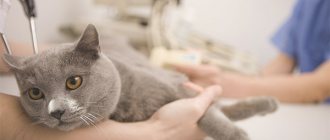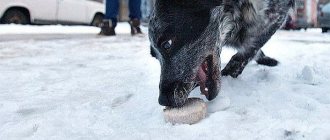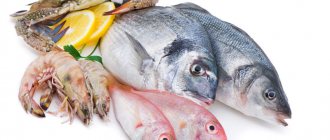Kittens are more susceptible to poisoning than adult cats. They, like all children, are very curious and often put all sorts of nasty things into their mouths. A small organism is more vulnerable, it has a smaller margin of safety, and usually for children, poisoning has more severe consequences.
If your kitten is poisoned, contact your veterinarian immediately! Call the clinic in advance and describe the symptoms in detail, and, if possible, name the toxic substance that caused the poisoning. Do not try to treat your baby yourself, because poisoning with various substances may require different help and a specific antidote.
What you need to know about cat poisoning
- Every owner should remember that a cat can eat and drink absolutely anything! Even strong-smelling solutions or food can get inside - deliberately or accidentally.
- Depending on the type of toxic substance, poisoning can be: chemical (hygiene products or household chemical solutions);
- medications (accidentally eaten drugs or overdose);
- toxic (poisons, various toxic substances for rodents, poisonous plants);
- food intoxication (poor quality or bacterially contaminated feed);
- bites of poisonous animals.
Diagnostics
The symptoms of poisoning in domestic cats largely depend on the toxic substance. Before you figure out what to give your cat if he is poisoned, it is worth determining the type of poison. Some specific clinical signs may indicate a particular toxic substance:
- When rat poison enters the body, a cat experiences vomiting mixed with blood and bile, cyanosis (blue discoloration of the mucous membranes).
- If your pet has had contact with poisonous plants, you may notice increased salivation, foam at the mouth, and nervous system disorders are common.
- Poisoning with organophosphate poisons is characterized by severe agitation, increased blood pressure, convulsions and paralysis.
- Food intoxication usually occurs with disruption of the gastrointestinal tract. The cat has vomiting, diarrhea, and severe thirst. The pet is depressed and refuses food.
- Signs of drug poisoning are: weakness, vomiting, depression, constriction of the pupils.
The main signs that a cat has been poisoned
The severity of signs of poisoning in cats will directly depend on the quantity and how the toxin entered the body. Obviously, the more toxin, the more severe the symptoms of poisoning will be in them.
Main signs of poisoning:
- decrease in body temperature;
- vomiting and diarrhea;
- severe drooling (may or may not be present);
- inadequate reaction of the pupils to light or its absence (pupils are constantly dilated or constricted);
- unsteady gait, weakness, apathy;
- sometimes there may be increased excitability (by the way, along with dilated pupils);
- loss of any interest in food, even the most beloved;
- breathing may become difficult (becomes fast and shallow or rare but deep);
- changes in the color of the mucous membranes (usually pallor, but sometimes intense redness);
- a sharp or unusual odor may be heard from the oral cavity (it may simply be changed, it may be precisely the substance that caused the intoxication);
- convulsions;
- loss of consciousness.
Depending on the toxic substances, the manifestations of poisoning may be as follows:
Medicines
Drowsiness or overexcitation, unsteadiness of gait and developing weakness, enlarged pupils, vomiting and pallor of the mucous membranes.
Poisonous plants
Diarrhea and/or vomiting, pupils may be dilated or constricted, decreased body temperature, increased heart rate, abnormal heart rhythm, trembling throughout the body.
Acidic substances or acids themselves
Swelling of the larynx, difficulty breathing, active secretion of saliva, and possible convulsions.
Alkalis
Convulsions, active secretion of viscous saliva, heavy breathing, bloody diarrhea and/or vomiting.
Poisoning from poor quality food
Diarrhea and/or vomiting, swollen abdomen with pain when palpated, weakness, pale bluish mucous membranes.
Pesticides (pesticides, rat poisons)
Trembling, active salivation, vomiting and bloody diarrhea. Obvious pallor of the mucous membranes, there may be hemorrhages (these substances prevent blood clotting). In case of severe poisoning, paralysis may occur after convulsive swallowing movements.
Mercury intoxication
A sharp drop in body temperature, the presence of ulcers on the oral cavity, severe vomiting, convulsions and paralysis may occur.
If a toxic substance enters through the nose (the cat inhales it)
Intensely red mucous membranes, strong salivation, lacrimation, belching. With severe intoxication, there may be convulsions, weak, shallow breathing, unsteady gait and/or loss of consciousness.
Permethrin
Permethrin is an antiparasitic agent. Its action is based on disruption of the permeability of insect nerve cells. Thus, permethrin has a neurotoxic effect. It is a synthetic analogue of biological substances of the pyrethroid group, obtained from flowers of the chrysanthemum genus.
Included in drops and sprays used to treat animals.
Absorption into the blood occurs through the skin when the drug is applied, or when liquid is licked from the surface of the body.
Cats are most often affected by the use of high doses of permethrin, which is part of antiparasitic products for dogs.
What can a pet owner do?
It makes sense to provide first aid if a pet is poisoned only when it is known exactly what it was poisoned with, and little time has passed since the very moment. In all other cases, if there are obvious signs of general intoxication, treatment at home is inappropriate and you need to rush to seek help from a specialist. If the owner knows how to give injections to a pet, then 1-2 ml of dexamethasone can be administered intramuscularly to the cat as an emergency aid (the best first injection for a cat in case of poisoning).
First aid for drug intoxication
— crush 2-4 tablets of activated carbon, mix with water and pour into the cat’s mouth.
Poisonous plants
- rinse the stomach with a weak pink solution of manganese and give 1 tablespoon of enterosgel or 5-10 ml of atoxil solution (1 sachet is dissolved in 40 ml of water and poured into the mouth).
Enterosgel and Atoxyl are very effective adsorbent agents, recommended for many poisonings with various substances, safe for animals and approved as first aid for their poisoning.
Acids
- immediately drink a solution of baking soda (1 teaspoon of soda dissolves in 200 ml of water). It is forbidden to induce vomiting! Acids will further injure the stomach, esophagus and mouth when released through vomiting.
Alkalis
- Mix 2.5 tablespoons of lemon juice with 3 tablespoons of boiled or any drinking water and drink. It is forbidden to induce vomiting!
Poor quality food
- induce vomiting if the cat is conscious. After cleansing the stomach, give 1 tablespoon of enterosgel, atoxil or 2-3 tablets of activated carbon, crushed with water.
Pesticides (toxic chemicals)
- rinse the stomach with a slightly pink solution of manganese, induce vomiting, then give 2-3 tablets of activated carbon, crushed into a paste with water.
Mercury
- be sure to open the window and give the cat access to fresh air, give the cat a drink of activated carbon dissolved in water, or give a tablespoon of enterosgel or raw protein.
Poisoning through the respiratory tract
- The cat should be carefully placed in a carrier and immediately taken to a specialist, carefully monitoring its breathing. When it stops, artificial respiration may be necessary (inhale air into the cat’s nose through a piece of gauze with its mouth closed 15 times per minute or 1 time every 4 seconds).
After first aid has been provided, the animal must be taken to a veterinarian for further rehabilitation actions. In order for veterinary care to be as effective as possible, you need to provide (if possible) the following information to the specialist:
- report the substance with which the cat was poisoned (if known), take with you a leaf or twig of the plant that was eaten;
- report at least the approximate amount of poison entering the body (again, if this is known);
- if there was a lot of vomiting, you can collect the vomit with you or simply remember the appearance and smell;
- tell in detail about the cat’s condition, when and at what speed changes in the condition are observed (if it worsens), it is important to remember in what sequence vomiting, diarrhea appeared, when the mucous membranes turned pale, etc.;
- remember whether you have or have ever had an allergic reaction to any foods or medications, what chronic diseases or congenital pathologies you have.
Animal treatment
Therapy for intoxication of an animal with toxic substances has a number of principles, the implementation of which will help save the life of a pet:
- Stopping the toxin from entering the cat's body.
- Rapid removal of toxic substances. For these purposes, the animal is vomited. To reduce the adsorption of poison, laxatives and diuretics are prescribed.
- The use of specific drugs for a specific poison - antidotes.
- Treatment of associated symptoms (heart and anticonvulsant medications, vitamins, dehydration therapy, etc.).
What does a veterinarian do?
When a cat is admitted to the clinic with obvious signs of poisoning, the veterinarian begins resuscitation measures.
Ideally, the cat is given a drip with 40% glucose, and at the same time the following are administered intravenously: general stimulants, detoxification drugs, hepatoprotectors, supporting cardiac activity, antiemetic and antidiarrheal drugs. Based on the general condition of the animal, the drip is repeated every other day. It is important to raise the animal’s body temperature, which usually drops significantly below normal during poisoning.
It happens that an IV cannot be placed due to weak blood pressure in the veins and the inability to get into the vessel. In very extreme cases, solutions are administered intramuscularly.
After the animal’s life is saved, it is prescribed a strict meat diet with a gradual increase in portions (feed only boiled meat, starting with meat purees from a minimum amount). Fatty foods and anything that could potentially increase the load on the liver are strictly prohibited. The administration of vitamin and restorative drugs continues (from 5 to 7 days), as well as hepatoprotectors. Depending on the intensity of the poisoning, the duration of the course of liver medications can last for several months.
List of drugs administered for cat poisoning:
- glucose (5%, 40%), reamberin, trisol, Ringer, Ringer-locka, duphalight;
- dexamethasone;
- hepatoprotectors: Essentiale, Hepatoject, thiotriazolin;
- vitamin-strengthening complexes, detoxicants: vitamin, vitamin C, B vitamins, antitox, lauritin-C, sodium thiosulfate;
- antiemetic: cerucal (metoclopramide), serenia (maropitant), ondasetron;
- cardiac medications: camphor, caffeine, cordiamine, sulfocamphocaine;
- antispasmodics: papaverine, baralgin (with caution).
Conclusion
Permethrin poisoning is a serious threat to the health and life of your pet. But, in fact, it is not so difficult to avoid.
To do this, you do not need to use drops, sprays or shampoos for dogs to treat cats against fleas, you should not treat kittens with medications for adult animals and, of course, you must always follow the instructions exactly.
If the house contains both a cat and a dog, then after treating the dog with a product containing permentine, it is necessary to isolate it from the cat for several hours so that the drug has time to be absorbed.
Permethrin is one of the most well-known insecticides used on pets. It is widely used in different countries and is a mild, safe drug for dogs. Very effective against flea infestation or tick infestation. However, cats are extremely sensitive to the effects of this drug.
Question answer
What if a cat is poisoned by rat poison?
It all depends on the amount of toxic substance that entered the body. These poisons prevent the blood from clotting and provoke numerous internal bleeding, accompanied by bloody diarrhea and vomiting. If the owner knows for sure that the cat has been poisoned by rat poison (ate poisoned grass or eaten a poisoned mouse), urgent detoxification measures are needed under the supervision of a specialist! Otherwise, the animal may not be saved. When providing first aid, it is important to administer vitamin K (vicasol) to the cat, the resources of which are depleted under the influence of poison.
Isoniazid poisoning
Cats are not as sensitive to this poison as dogs, but poisoning still happens. Clinic of poisoning: foamy salivation (foam from saliva), weakness, vomiting, possibly diarrhea, convulsive twitching. First aid at home is to rinse the stomach and add adsorbents (activated carbon, enterosgel, atoxil). In the clinic, in case of severe poisoning, vitamin B6 (a specific antidote for isoniazid), anticonvulsants, cardiac stimulants and detoxifiers will be administered.
Poisoning a cat with flea repellent
Not every cat can be poisoned by flea medications if it licks it. By the way, if anti-flea products are applied correctly, it is impossible to lick them off. A strong, healthy cat will tolerate everything relatively normally, and may not even need help. A weak, sick or young animal can be poisoned with the whole clinic: diarrhea, vomiting (not necessary), weakness/lethargy, drooling, uncoordination may appear.
The best thing is to immediately take your cat to the veterinarian as soon as at least a few of the listed signs are noticed. If this is not possible, then the cat must be put on a starvation diet (at least for a day), given water and 1 tablespoon of enterosgel three times a day or 2-3 tablets of activated charcoal until vomiting and diarrhea stop. If the cat is lethargic, does not eat, does not drink, or almost loses consciousness, independent intervention in the condition is inappropriate!
What to give a cat if it is poisoned?
Everything will depend on what the animal was poisoned with. There are subtleties if intoxication occurs with an acid or alkali: in the first case, you need to drink a solution of baking soda, in the second, you need to drink lemon juice with water or a slightly acidic solution of citric acid. In all other cases, after vomiting, you can give activated carbon (2-4 tablets), enterosgel (1 tablespoon at a time) or atoxil solution (5-10 ml), diluted according to the instructions. But after first aid, a visit to the veterinarian is mandatory!
Cat poisoning with drugs
The condition can develop from ingestion of human drugs or an overdose of veterinary drugs. Whether the animal can be saved will depend on the toxic substance. It is better if first aid is provided by a veterinarian. If he is not immediately nearby, then you need to induce vomiting and then give him any adsorbent to drink. If more than 2.5-3 hours have passed since the ingestion of drugs, vomiting loses all meaning, because all toxins have long been absorbed, and only a specialist will help to cope with the symptoms that have developed against the background of medications.
Author:
Grinchuk Ekaterina Andreevna veterinarian
The third group is medicines
There are known cases where a pet was poisoned by medications. In this case, the characteristic signs are drowsiness, lethargy, weakness of the cat, possible vomiting, as well as constriction of the pupils. To cope with this problem, the animal needs to rinse the stomach with a solution of activated carbon, and also introduce enveloping agents inside.
Symptoms and how to help a cat in case of poisoning yourself at home without a veterinarian
When a pet is in a state of poisoning, this causes concern among the owners. And this is natural, because elevated body temperature, slight tremors in the muscles, vomiting, diarrhea and other manifestations left without attention and proper treatment can lead to death.
The cat was poisoned, what to do at home
This article will discuss the main causes of poisoning and the actions that the owner must perform in order to minimize this condition in the animal.
Types of poisoning
The cat's eyes are watery: what to do at home
Poisoning in cats can be caused by a variety of factors. In addition, external manifestations can be expressed in both acute and chronic forms.
Cat poisoning
That is why, first of all, it is necessary to establish the substance that caused this condition. It can be:
It is necessary to understand that toxic substances can enter the body not only with food and water, but also through the respiratory tract or through the skin, if tactile contact occurs.
Important! Since the list of toxic substances is quite wide, the owner should know the main symptoms of intoxication that his pet may experience in various types of poisoning.
Cat food poisoning
Any food products from the human table, as well as cat food, can cause acute food poisoning. This most often occurs because the product is expired or was stored in improper conditions. It is necessary to take into account that the most severe food poisoning can be caused by canned food in metal containers, since botulism bacteria can develop here.
Note! This process occurs in extremely severe forms and if urgent measures are not taken, the animal may die. It is best if the animal is hospitalized and nutrition is administered through a vein. Only a veterinarian can help him, so you should not delay the process of going to the clinic.
Cat food poisoning
Spoiled food
If an animal eats food taken from the owners' table, this can also cause a poisoning process. In this case, the cat may experience vomiting or diarrhea, sometimes a combination of two symptoms. In case of severe poisoning, which most often occurs due to dairy or meat products, the animal may develop a fever.
This condition can be cured at home.
Poisoning cats with drugs
Medicines that enter the animal’s body in a dose exceeding normal levels can negatively affect health, especially if the drugs were potent.
Important! When treating an animal with medications, you should strictly adhere to the recommendations given by the veterinarian or those prescribed in the instructions for the drug.
Poisoning with rat poison
Rat poison accidentally eaten by an animal can cause not only poisoning, but also death. It is imperative to contact a veterinarian as soon as possible, because even a drop of this substance can cause death.
An animal can also be poisoned by dichlorvos, which was used to poison insects indoors, or by boric alcohol, which can also be contained in different types of poison.
Poisoning a cat with rat poison
Poisonous plant
Poisonous plants that enter the digestive tract can cause either slow poisoning or acute poisoning. It all depends on what species the animal ate. The most commonly eaten plants by pets are azalea, chrysanthemum, cyclamen or clematis.
Pesticides, which may be contained in the plants themselves or plant products, can also poison Chemical elements such as copper, arsenic, salts of heavy metals and other toxic chemicals have a negative effect on the body.
Mushroom poisoning
Intoxication of this type occurs quite rarely, since few owners would think of feeding their pet this type of food. But if a cat is walking outside, he may involuntarily eat a mushroom, and it may turn out to be poisonous.
In this case, it will be difficult for the owner to guess what exactly his pet consumed. Therefore, you will have to focus exclusively on the symptoms, which manifest themselves in the fact that if amatoxins enter the cat’s body, he can simply fall asleep.
As numerous studies conducted by American and European scientists show, in this case, a cat or other pet falls into a deep sleep, from which it is simply impossible to wake them up. But, if in this case the pet is treated with the standard atropine offered, then the state of sleep turns into a coma, and later into death.
Therefore, scientists in the field of research of food poisoning in animals suggest in this case to simply wait for the recovery from this state. It usually lasts no more than 12 hours.
Mushroom poisoning
Important! Please note that cats rarely eat mushrooms, unlike other pets such as dogs. But they experience some strange craving for dried fly agaric caps of different subtypes. It is they, with their toxic substances, that, when entering the animal’s body, cause such sound sleep.
Carbon monoxide poisoning
An animal can also be poisoned by carbon monoxide. This is a fairly serious condition that requires immediate intervention. After all, carbon monoxide entering the body will first lead to a state of poisoning, and then, in the absence of proper treatment, cause death. This is caused by the fact that carbon dioxide replaces oxygen in body cells and tissues.
Thus, red blood cells are no longer able to transfer this important element to all organs; in fact, the animal suffocates. Only this process occurs at the cellular level - the animal takes a breath, air fills the lungs, but carbon dioxide does not allow oxygen to enter the blood.
The main symptoms include swelling of the nasal mucosa, oral cavity and larynx.
Carbon monoxide exposure
How does poisoning manifest in a cat?
The cat is sneezing: reasons, what to do at home
If we talk about the overall picture, the symptoms of poisoning in cats appear as follows:
- The animal experiences a state of shortness of breath.
- The mucous membranes acquire a pale tint, in some cases it may become cyanotic (takes on a bluish appearance).
- The animal will always refuse food.
- The cat can be in a state of either excitement or complete apathy and drowsiness.
- He may experience vomiting and nausea.
- In particularly severe conditions, hemorrhages occur in internal organs and tissues. In this case, the stool may be stained with blood threads.
- The cat may fall asleep, which happens with mushroom poisoning.
- Sometimes he loses consciousness.
Note! But despite all of the above, it is worth noting that the cat is quite sensitive to what it eats. Therefore, it is not often poisoned. If we talk about those cases that are most likely to occur, then these are, first of all, food poisoning and intoxication caused by eating both indoor and outdoor plants.
First aid for various types of poisoning
The cat has a fever: what to do at home
Not everyone knows what to do if a cat is poisoned. For most food poisoning, it is necessary to induce vomiting in the animal.
To facilitate this process, you can initially inject a small amount of water directly into the throat using a syringe. Then try to tickle the cat's palate with your finger, after which she will begin to burp spontaneously.
This is not easy to do, but it is extremely necessary in order to alleviate symptoms.
First aid for a cat in case of non-standard poisoning
Also, when a cat is poisoned, all owners of these animals need to know what to do at home. Will be able to help:
- ventilation of the room in case of carbon monoxide and smoke poisoning;
- pouring a mixture of water and hydrogen peroxide in equal proportions directly into the throat in case of poisoning with rat poison;
- If a cat has been poisoned by household chemicals containing poison or acid, it is necessary to rinse the stomach with a soda solution before contacting a veterinarian.
Diagnostics
It is impossible to fully carry out diagnostics at home, unless, of course, the owner knows specifically what poisoned his animal.
That is why, when a cat is poisoned, you should immediately go to the veterinarian, only he knows what to do at home to cure the pet. He will also decide whether to hospitalize the animal or whether to carry out activities at home that will help the animal get rid of intoxication.
In the vast majority of cases, the following manipulations are performed:
- Visual inspection.
- If the animal has vomited or defecated in front of a veterinarian, he will examine the contents of the vomit or feces.
- Check to see if foam comes out of your mouth.
- Measures body temperature.
- Listen to breathing.
- He will palpate the internal organs to determine how inflamed they are or whether they are in normal condition.
- He will take all the necessary tests - blood, samples from the mucous membrane.
- If necessary, an ultrasound will be performed to detect inflammatory processes in the internal organs.
Note! Only after a comprehensive examination will the doctor be able to prescribe medications that will help treat your pet.
How to help a cat at home with food poisoning
If food poisoning occurs in an adult cat, it is necessary to give it as much water as possible during the onset of symptoms.
At the first stage, you should induce vomiting and try to empty the animal’s stomach as completely as possible. If after this manipulation it visually begins to look healthier, then you can simply give a large amount of water.
You can serve chamomile infusion, as it has a mild bactericidal and disinfecting effect.
Here's what else you can do if your cat has food poisoning:
- Try to support him on his diet.
- Giving exclusively porridge and water will make it easier for the body to tolerate this condition.
- Avoid protein foods, as they put unnecessary strain on the digestive system.
Here's what to do if your kitten is poisoned:
- It is necessary to induce vomiting in him first.
- Then you can rinse the stomach with a very light solution of potassium permanganate. Make the concentration so that it has a slightly pale pink tint.
- Avoid heavy foods.
Important! Give us exclusively porridge cooked in water. Moreover, do not insist on eating, but do this only when the animal itself shows interest in food. It is best to first grind the grains in a coffee grinder in a dry state, and only then cook them in water. All of this will help reduce the signs of food poisoning.
Treatment of a cat with non-food poisoning
The occurrence of non-food poisoning is more complex in its symptoms. Therefore, it is best to contact a qualified veterinarian. The set of preventive measures includes:
If non-standard types of poisoning occur, it is necessary to give your pet as much to drink as possible. Such assistance will help him more intensively remove toxic substances from the bloodstream, gastrointestinal tract, as well as other organs, systems and tissues.
But at the same time, after infusion of liquid, it is necessary to induce the feeling of vomiting if the animal does not vomit. If this is not done, then, along with water, toxic substances, on the contrary, will be absorbed into the body even more intensively.
Important! In case of carbon monoxide poisoning, remove the animal to fresh air.
In case of mushroom poisoning, no measures should be taken under any circumstances. Immediately contact a veterinarian, having first tried to find out what type of mushroom the cat was poisoned by.
In case of poisoning with household chemicals, also induce vomiting by first introducing clean water into the stomach. Liquid must be removed exclusively in a horizontal position.
After washing, it is necessary to introduce small amounts of water, thereby forcibly drinking the animal. This is important to do in cases where there is diarrhea and vomiting. This manipulation allows you to avoid dehydration of the body, which can only aggravate the symptoms of poisoning.
It is important to calm the animal if it shows excessive hyperactivity.
Pouring liquid through a syringe
Nutrition rules after poisoning
After the animal has been diagnosed and a set of medicinal measures has begun, the following dietary rules should be followed:
- Give exclusively light food - exclude fatty, fried, heavy foods.
- It is best to feed porridge cooked in milk. For kittens, the cereal is first ground to flour. This makes the consistency more uniform and easier for a weakened gastrointestinal tract to digest.
- Do not give milk, but limit yourself exclusively to water.
Preventive measures
Poisoning in a cat can also be caused by household chemicals. Components such as fungicides, solvents, various cosmetic fragrances and acids can cause intense chemical poisoning of the animal's body. Therefore, it is necessary to keep all detergents and other household chemicals, including shampoos, toothpastes and other cosmetics, out of reach of the animal.
Note! It is also worth excluding the growth of domestic plants that can poison the cat.
Give exclusively fresh food, not allowing it to sit in a bowl for even 2 hours. During hot weather, the remaining milk or lactic acid food products must be poured out immediately after the animal has eaten.
All these techniques are quite simple, but will help you avoid most types of food poisoning.
Source: https://gafki.ru/koshki/kot-otravilsya-chto-delat-v-domashnikh-usloviyakh.html
Are you here
Sources of poisoning
Natural pyrethrins are a group of six insecticides that are obtained from flowers such as Chrysanthemum cinerariaefolium and Chrysanthemum cineum. Pyrethroids are synthetic analogues of pyrethrins, which differ from them in increased toxicity, increased duration of action and stability in the environment. Pyrethrins and pyrethroids are widely used as insecticides and are readily available in pet supply departments and are used to control flea populations in cats and dogs and to kill insects in the home. The form of release of these drugs has significant differences; they can be added to flea collars, shampoos, sprays, drops on the withers, etc. The point of action of pyrethrins and pyrethroids on insects is the nervous system; the drugs cause increased excitability in them, followed by death. The sensitivity of mammals (including cats and dogs) to the effects of pyrethrins and pyrethroids on nerve cells is thousands of times less than that of insects, and therefore they can be used quite safely for a variety of animals.











